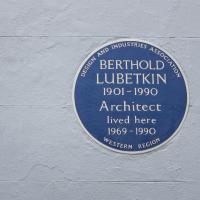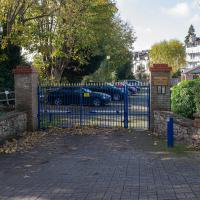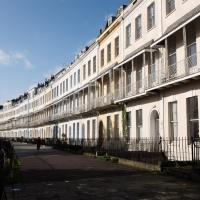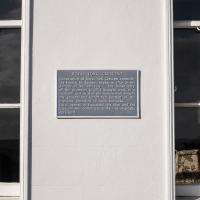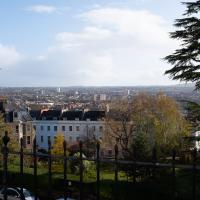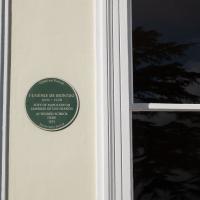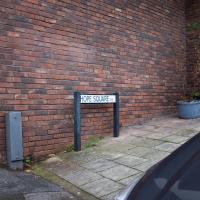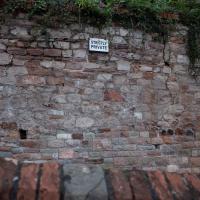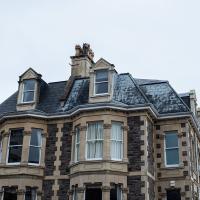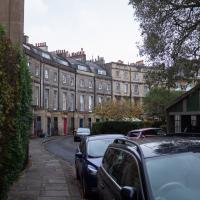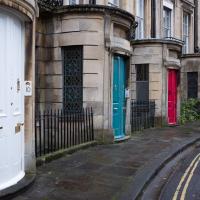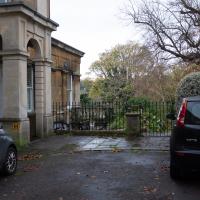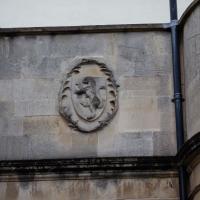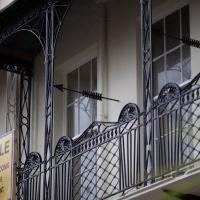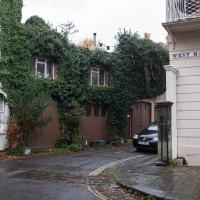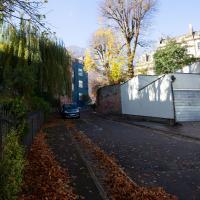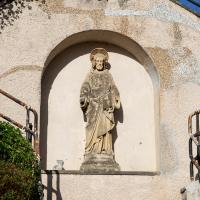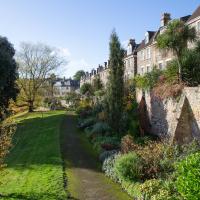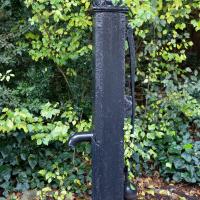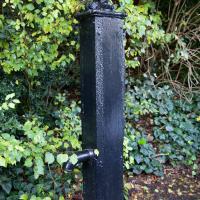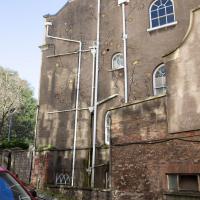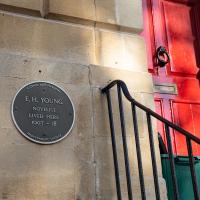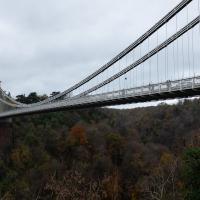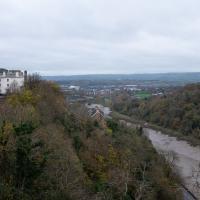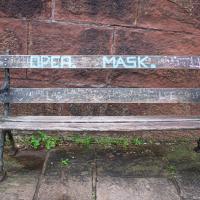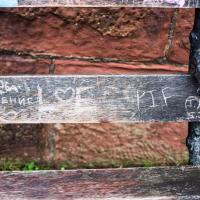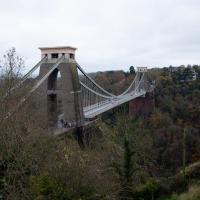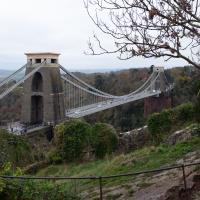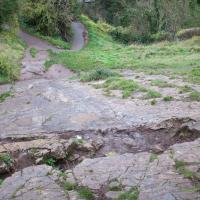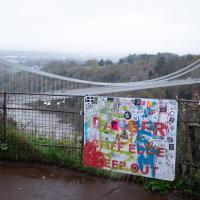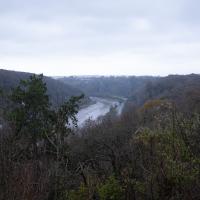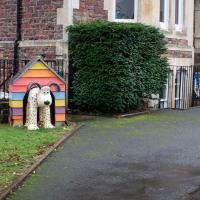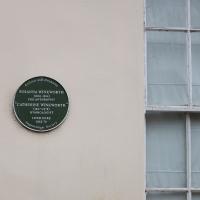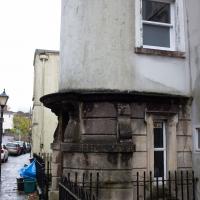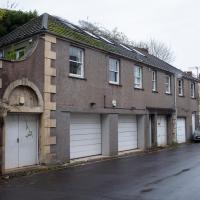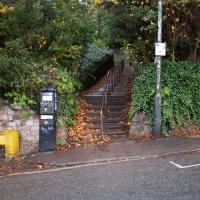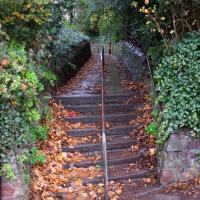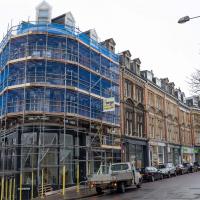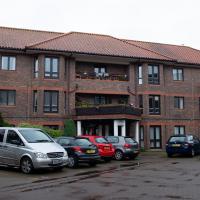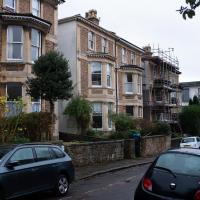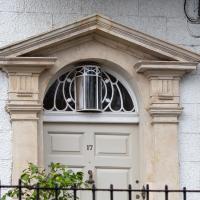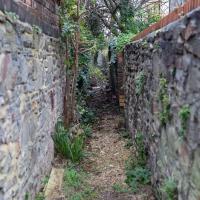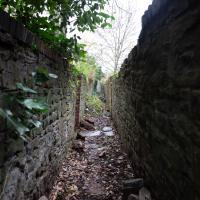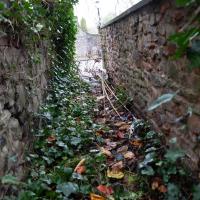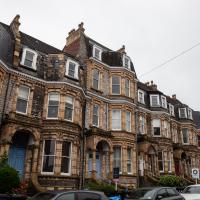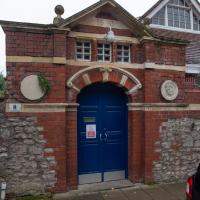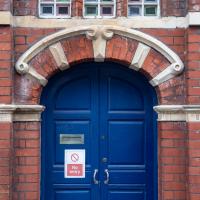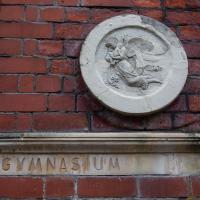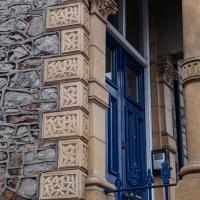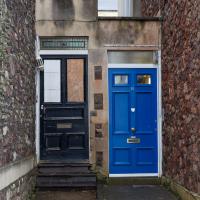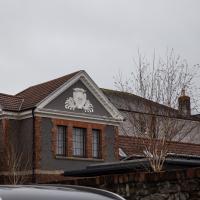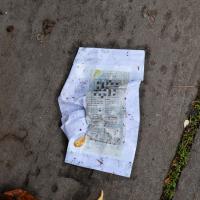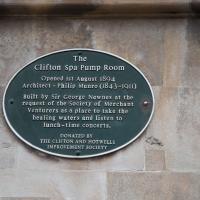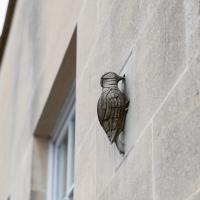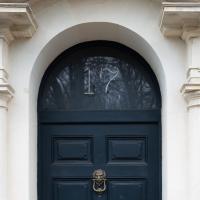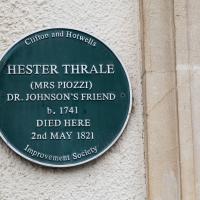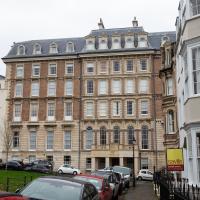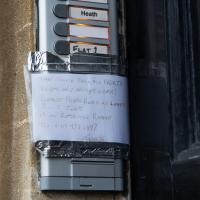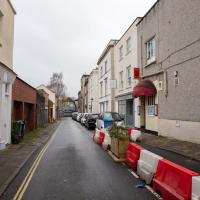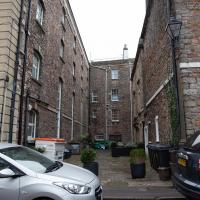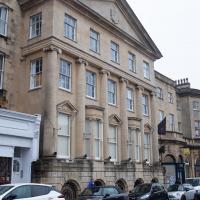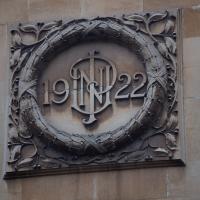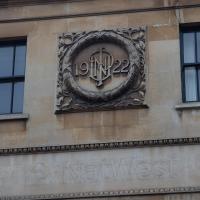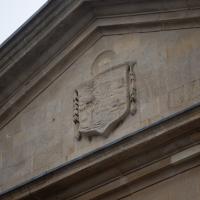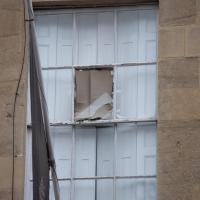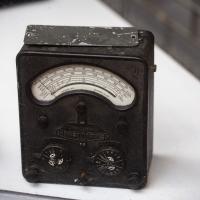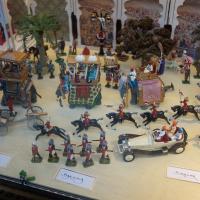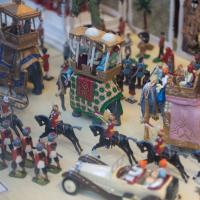Tagged: clifton-village
The End of a Private Road
27 Oct 2020
One of the homes in Windsor Terrace went on the market for £2,000,000 a few years back. This is the closest I've been to it, right at the end of the private road. Presumably they're okay with people wandering down the road if there's a blue plaque to be seen at the far end?
Both the plaque to Edward St John Daniel and the other photo I took (in these early walks I was mostly walking, rather than mostly taking photographs) have interesting stories of a rise and fall associated with them in the first Google hits I found. Daniel was indeed the youngest recipient of the VC, but was stripped of the medal by Queen Victoria herself in 1861, following conviction for desertion and evading court martial. Lubetkin is probably most famous for designing the penguin pool at London Zoo, which was closed 17 years ago, after the micro-abrasions in the penguins' feet caused by the concrete led to them developing an infection with the charming name "bumblefoot".
Designer of, among other things, the London Zoo penguin pool, and Highpoint, described by Corbusier as "This beautiful building .... at Highgate is an achievement of the first rank", and I like Corbusier's ideas, having read about them in How to Make a Home, I think, so that was what caught my eye on the Wikipedia page.
Royal York Crescent
02 Nov 2020
I've taken a lot of photos of Royal York Crescent over the years. This time I walked right to the dead-end bit at the far west corner and found a plaque to the Empress of the French. Call me hard to impress, but among the scientists, novelists, architects and artists whose plaques litter the rest of the area, that seems quite minor claim to fame.
A gated community, apparently. There's a few of these little enclaves in Clifton, often hidden "around the back", as mews always were, I suppose.
I enjoy walking along Royal York Crescent enough that it's a frequent diversion from my quickest way home
And in between times were the Napoleonic Wars, which probably explains the desire for a barracks.
I've been tempted to try these Voi scooters-for-hire to expand my range for lunchtime wanders. However, having read their rules, at 118kg I'm 18kg over their maximum weight limit.
Little Clifton Village Details
09 Nov 2020
I like The Paragon as a terrace, especially the bowed porches. On the other side of the road, a house attic has a stone lion surrounded by rocaille leaves, according to its listing.
I also love the detail of the arrows in the wrought iron of The Mall's balconies. Today I discovered Westfield place, a road I'd never encountered that runs up to the rear of the Coronation Tap. (It's a famous local cider pub, but I've only been in a couple of times. I'm more of a beer man.)
This leads up to the back of the Paragon. Maybe we'll take a look at the front instead, then...
There's a private garden; from Google Maps it looks like it's mostly around to the right of here, behind a wall. It abutts the back gardens of Prince's Buildings and Windsor Terrace, I think, so might even have a way out onto Prince's Lane, or did have at some point in the past, before everything got quite overgrown back there.
Number 16 The Paragon lies on the other side of the street from the main terrace. It's grade II listed and has "a raised shield to the attic with a lion surrounded by rocaille leaves".
I do like the rebellious scruffy place in among the clean Georgian spledour. My friend Marie-Louise once told me she wanted to live here, I think just because it was obviously a rebel stronghold...
Clifton Village: Jesus and the Tympanum
12 Nov 2020
My goal is walk down every public road within a mile of me; sometimes it's not easy to tell what's public. I've passed the turning for Cornwallis Grove a thousand times, but never had a reason to venture down it, and although the street signs at the end seem to be council-deployed and I didn't spot any "private" signs, it's a gated road and definitely feels private.
Gathering all the white middle-class privilege I could muster, I wandered down and was rewarded with the sight of a Victorian pump, a statue of Jesus, and from the end of the road, a view of a private garden that once belonged to a private girls' school.
The Cornwallis House history page says:
In the early 20th century the house, together with Grove House, became a Catholic school, St Joseph’s High School for Girls.
The Congregation of La Retraite took over the school in 1924, with the nuns living in Grove House while the schoolrooms were
in Cornwallis House. The headmistress was Mother St Paul de la Croix (Sister Paula Yerby). By the 1970s La Retraite High
School had around 700 pupils.It closed in 1982 and the building was bought by Pearce Homes Ltd (now part of Crest Nicholson) who developed it into 21
flats. Grove House next door was bought by the Bristol Cancer Help Centre, and was later converted into flats in 2007.
Glendale. One of those streets that's just around the corner from me, but that doesn't take me anywhere I ever need to be, so I've probably only walked up it half a dozen times in the couple of decades I've lived here.
According to the history page on its website, it's been everything from the private residence of the wealthy nephew of a shipping agent who had a hand in the slave trade, to a Protestant nunnery and a Catholic school, St Joseph’s High School for Girls. It's now residential.
This is opposite Grove House, but I'm wondering if it might be a remnant of the adjacent Cornwallis House having been a Catholic girls' school or a Protestant nunnery. All I know is that I've walked past the end of this road a thousand times without knowing how close to Jesus I was.
Cornwallis House's extensive private garden, with the back of York Gardens serried at the top.
Inspired by this plaque, I'm now (a couple of months later) about a third of the way through EH Young's Chatterton Square, set in a fictionalised Clifton called Upper Radstowe, whose eponymous square is based on Canynge Square.
Hotwells and Clifton/Clifton Village
14 Nov 2020
A local walk with my friend Lisa in tow, including a coffee from the cafe in the Clifton Observatory, where I have fond memories of experiencing my first camera obscura, and cake from Twelve in Clifton Village, one of my favourite recent finds for both food and flat whites.
Clifton Village Mini Wander
20 Nov 2020
Just a quick wander up the hill to get a flat white from Twelve. I really enjoyed the spooky mannequin (?) in the window.
The one nearest is an AirB&B-style rental and looks lovely inside. This is the kind of quirkiness I might aspire to.
Many a time have I wandered down this little cut-through that joins Saville Place and the Fosseway. A shortcut through the Polygon starts me off, then it's pretty much a straight line up through to here and on to Queen's Road.
A little retirement housing block sitting at the end of a private road at the end of the Fossway. I've never wandered up and seen it before, though I've walked past it a thousand times.
I'm not sure what's going on in this fanlight on Richmond Terrace. Maybe it's space for a lamp?
And Back Down the Hill from the Flu Jab
21 Nov 2020
This is my return from getting my annual flu jab at Christ Church, as explained in more detail in my wander up the hill.
I don't think this is exactly a public right of way. But I started so I tried to finish without getting the police called on me by worried residents
I do love this terrace. The mansard roofs, the grand central house, the ornamentation, the porches. It's all rather grand.
This is now the Bristol School of Dancing. Their website says:
Built in 1893, it stands in the garden of 20 Vyvyan Terrace and it is rumoured that it was once a Swedish diplomatic building that contained a gymnasium. This is probably why on either side of the main entrance the words “Swedish Gymnasium” are carved.
Don't know what the JMJ is all about. Seems to be part of Cedar Care Homes (this is all behind their grand head office on Clifton Down Road, Mortimer House), but it's hard to tell for sure.
Up for the flu jab
21 Nov 2020
A trip up the hill to get my winter flu jab. I'm not sure I really needed it this year, what with avoiding Covid—I haven't had so much as a sniffle in more than a year—but seeing as they offered... Instead of the doctor's surgery on Pembroke Road, they'd taken over Christ Church, presumably to give more room and ventilation for the necessary social distancing at the moment. As usual, it was their typically efficient operation, and I was in and out in about three minutes.
On the way there and back I snapped as much as I could, but I wanted to be home in time for the first online Times Crossword Championship. As it turned out, I needn't have bothered, as the technology at the Times couldn't keep up with the demand from competitors, and their system just collapsed under the weight of page-views. They tried again the day after, and it collapsed just as badly. Maybe next year...
This wander is split into two parts, as I turned my tech off to go into Christ Church for my jab. The walk home can be found over here.
This was meant to be the day of the first online Times Cryptic Crossword Championship. Sadly the Times's web servers let them down, so the event was a washout, and I dashed back from my flu jab to take part for no good reason, as it turned out.
Although it looks like the side of the kind of flats you see everywhere in Clifton Village, the building to the left is actually the Christchurch Recording Studios. Among other artists who've used the studios, two of Massive Attack's number one albums were recorded here, according to this article that sadly but inevitably seems to suggest that the building might be converted into luxury flats soon.
It was originally fitted out as a drama and recording studio by the BBC in the 1980s.
Avoiding the Accounts
26 Nov 2020
I took the day off my day job to do my accounts—or at least do enough bookkeeping to send them to my accountant. I hate doing the books. I woke up late, tired and with a headache and decided to bunk off for a walk around Cliftonwood, Clifton Village and Clifton instead, taking in a couple of good coffees along the way. Thanks, Foliage Café, and Twelve for the flat whites.
A long ramble, starting with trying to find the Hot Well of Hotwells and leading up the side of the Avon Gorge to the Downs and then through Clifton for coffee.
It's very nice in there. I will never be wealthy enough to be asked to join, which I understand it the only qualification I don't fulfill, being white, male and old. Actually, I tell a lie; in 2006 they voted to allow women to join, after only 188 years of prior existence
Not sure whose initials those are, but this is The Ivy, Clifton, formely NatWest bank, on the corner of The Mall and Caledonia Place. The listing says of 32-44 Caledonia Place, "he left-hand end pair rebuilt as one in 1922 to form a bank", and mentions 'the monogram "NUP"'
Has some local socialist been throwing rocks through the Clifton Club windows? Or maybe some descendant of WG Grace (a former member) was re-enacting some cricketing action a little too animatedly at the dinner table...
The Avometer brand multimeter was popular for decades; first made in 1923, the last one was produced in 2008. AVO stands for Amps, Volts and Ohms, the three things this multimeter can measure.
This collection was on display as part of an auction being held by a jeweller's on Princess Victoria Street.

